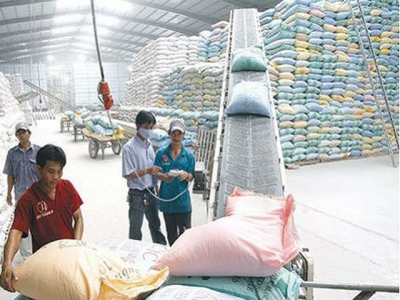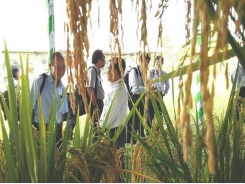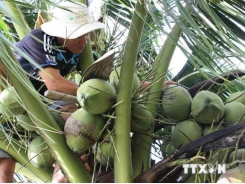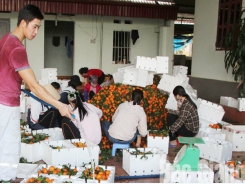Rice demand from China declines, causing concern among farmers

China’s role as a big rice importer of Vietnam’s rice is changing dramatically, sparking concern among farmers.
The General Department of Customs (GDC) reported that Vietnam exported 712,000 tons of rice in the first two months of 2019, with export turnover of $311 million, decreasing by 14.4 percent in quantity and 23.6 percent in value compared with the same period last year.
China, which had always been the biggest buyer of Vietnam’s rice over many years, consuming 35-40 percent of Vietnam’s total exports, has fallen from the No 1 position.
The country bought 9,500 tons of rice from Vietnam in the first two months of the year, worth $4.5 million, a sharp fall of 95.14 percent in quantity and 95.48 percent in value.
The Philippines has become the biggest importer of Vietnam rice with 315,000 tons having imported so far this year, valued at $125 million, an increase of 80.92 percent in quantity and 60.63 percent in value. The second position belongs to the Ivory Coast, with 65,000 tons and $30 million.
Meanwhile, Malaysia is now in the third position with 38,000 tons and $17.6 million, and Hong Kong, Ghana and Singapore are fourth, fifth and sixth.
The Philippines has become the biggest importer of Vietnam rice with 315,000 tons having imported so far this year, valued at $125 million, an increase of 80.92 percent in quantity and 60.63 percent in value. The second position belongs to the Ivory Coast, with 65,000 tons and $30 million.
The decrease in rice exports to China was anticipated as the Chinese government has begun applying new policies, including higher tax imposition and tightening of imports across border gates.
Nguyen Van Don, director of Viet Hung Co Ltd, said China warned in advance that it would tighten control over imports from Vietnam and ASEAN countries.
In order to export rice products to China, Vietnam’s enterprises must satisfy many technical and administrative requirements. Samples of export products must be tested at Chinese facilities, while the labels on products must include information about product origin as per international practice.
In 2017, Chinese agencies granted licenses to 22 Vietnam’s enterprises, allowing them to export rice to the country through official channels. However, in order to obtain visas to the Chinese market, exporters have to satisfy many other requirements.
All the consignments of exports must be examined and the production progress must be controlled by Chinese agencies, from growing areas and production factories to storehouses and sterilization.
However, rice exporters have regained optimism this year. The Vietnam Food Association (VFA) said more orders have come. Vietnam signed a contract on selling 120,000 tons of rice to Iraq, while Malaysian Bernas has ordered 25,000 tons of white 5 percent broken rice from Vinafood 1. Vietnamese exporters are negotiating with importers from the Philippines and China.
Có thể bạn quan tâm
Phần mềm

Phối trộn thức ăn chăn nuôi

Pha dung dịch thủy canh

Định mức cho tôm ăn

Phối trộn phân bón NPK

Xác định tỷ lệ tôm sống

Chuyển đổi đơn vị phân bón

Xác định công suất sục khí

Chuyển đổi đơn vị tôm

Tính diện tích nhà kính

Tính thể tích ao hồ




 Vietnam targets 5 bln USD in veggie, fruit…
Vietnam targets 5 bln USD in veggie, fruit…  Innovative solutions to help famers replant ageing coffee…
Innovative solutions to help famers replant ageing coffee…